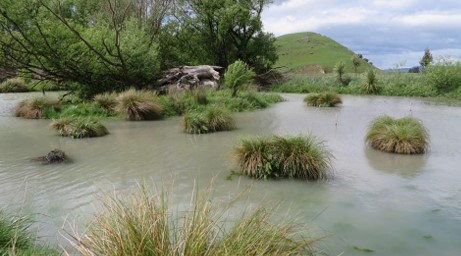The Use of Straw Bales to Establish Carex secta in Open Water to Establish Vegetation Cover for Waterfowl
By Nathan Burkepile Senior Fish & Game Officer Hawke’s Bay Fish & Game
Problem
Most of the farm ponds around the Hawke’s Bay region lack protective cover for waterfowl broods. The planting of trees around the pond edges can provide cover but will take years to establish and may not provide cover over portions of the open water. In natural wetlands, cover for waterfowl broods is usually provided by emergent vegetation including sedges and rushes. The establishment of sedges and rushes is relatively easy and can provide escape cover within a year of planting.
One important plant that can provide good overhead cover in wetlands and ponds is Carex secta. Carex secta are an important component of many wetlands and provide habitat characteristics needed by many species of water birds including waterfowl. These plants provide cover for loafing and protection from aerial predators. Carex secta plants provide food for many water birds both directly and indirectly. The seed can be a valuable food source for waterfowl, but the plants provide valuable habitat for invertebrates which are an important food source for waterfowl broods and many water birds.
However, establishing Carex secta in portions of restored wetlands or farm ponds that are covered in water is complicated due to fluctuating water levels either drying out the area or covering the plants completely. Carex secta can establish but may take years for the right conditions to occur before establishment. Developing a reliable method for establishing Carex Secta in open water is important for practitioners of wetland restoration and creation.
In 2016, Hawke’s Bay Fish & Game initiated a trial using straw bales to establish Carex Secta plants in open water. This trial will determine the viability of the use of straw bales to establish Carex secta plants on farm ponds, restored wetlands, and created wetlands.

Photo 1: A stand of naturally occurring Carex secta in a wetland.
Methods
To establish pedestals of Carex secta in restored wetlands, we placed straw bales in the water with wide side of the bale lying flat against the bottom (straw ends facing sideways). Some were placed in shallow water (slightly below the top of the straw bale) and some were placed in deeper water (straw bale submerged by several centimetres), but with the Carex secta plant mostly out of the water. Wooden stakes were used to anchor the straw bales to the wetland bottom to keep them from floating away before becoming waterlogged or moving due to wave action. We planted a Carex secta plants (grown in Tinus root-trainers) at each end of the straw bale.
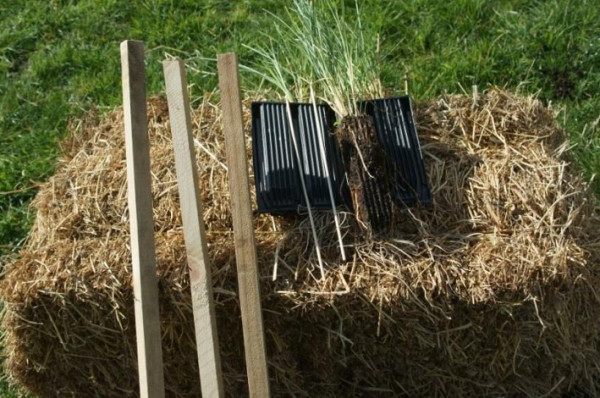
Photo 2: Supplies used during the straw bale trials.
We placed 16 bales with 2 Carex secta plants split into six treatment groups (Figure 1). We used two types of straw bales (lucerne and pea) to determine if plant establishment and decomposition rates differed. We were concerned that wave action would reduce the intergrity of the bales so we wrapped wrapped 8 in hessian sacking. We also split the bales into deep (water covers bale and base of plant) and shallow water (bale several cm above the water line).

Photo 3: View of the straw bales and Carex secta prior to placement in the water.
We monitored the plantings on a regular basis to determine the survival of Carex Secta, measure the growth of plants, and monitor the structure of the hay bale over time. For the first year, we considered it a success if at least 1 Carex secta plant was still growing.
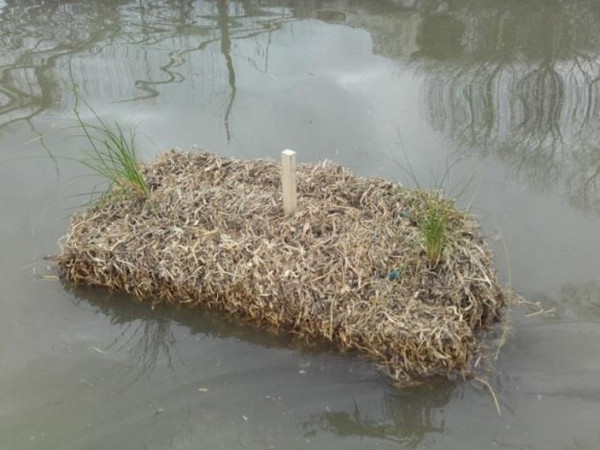
Photo 4: View of the straw bales and Carex secta right after placement in water.
Results
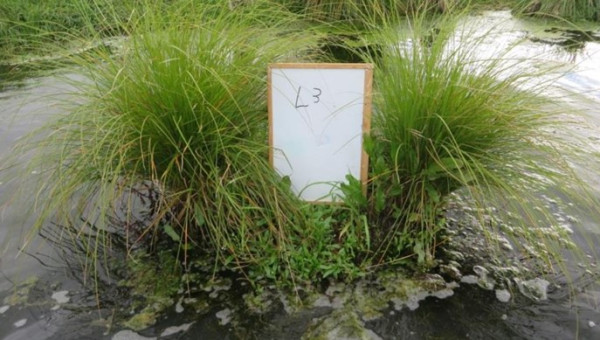 Photo 5: Carex secta growth 2 months after placement of straw bales into the water.
Photo 5: Carex secta growth 2 months after placement of straw bales into the water.
Shortly after planting, a few Carex secta plants were pulled out by pukeko. These plants were replaced with new plants which were not bothered with by pukeko. The plants did not appear to grow during the first few weeks after planting and then growth rate increased after about 6 weeks. By mid-summer, the hessian sacking was completely decomposed.
We had good establishment (at least one plant surviving) rates for the lucerne, but poor establishment rates for pea straw (Figure 1). The success rate for lucerne was higher in the shallower water which may be due to the higher fluctuation of water in the deep water. All the plants in the lucerne bales in the shallow water were still growing after a year whereas the deep water bales had several that only had one plant establish.
| Straw Type | Treatment | Number | #Survived | Success Rate |
| Lucerne | Shallow | 5 | 5 | 100% |
| Deep | 4 | 3 | 75% | |
| Pea | Shallow | 4 | 0 | 0% |
| Deep | 3 | 1 | 33% |
Figure 1: Success rates of Carex secta establishment in straw bales 1 year after planting
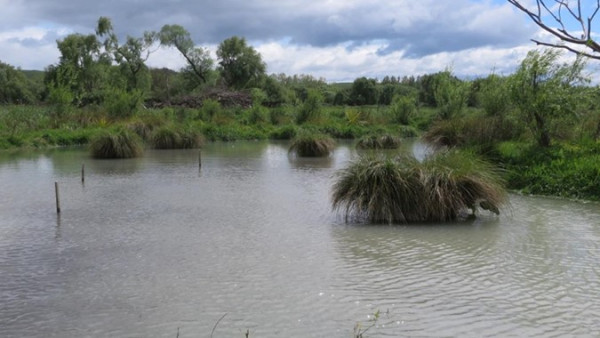
Photo 6: Growth of Carex Secta one year after planting. The stakes are where pea straw trials were planted.
Water levels fluctuated through the summer with the bales in the deep areas either floating or being completely flooded. Several bales floated from their placement as a result of the water fluctuation. This was either due to the bale floating over the stake or the stake being pulled out due to the bale floating and wave action. The one pea straw bale that was successful was one of these bales. It floated to the edge of the pond which became very shallow water and as the bale decomposed the plant already rooted at the pond edge. The lucerne bales that floated appear to be doing well, but it is still unclear if they are firmly rooted in the pond bottom.

Photo 7. Root structure 1 year and 2 months after planting.
Discussion
There appears to be no advantage to using hessian sacking to protect the straw bales as it rotted away faster than both the lucerne and pea straw bales. Our results clearly show that the type of straw used is important. Pea straw broke down within 7 months after placement in the water. This may be due to pea straw being a finer material than lucerne straw. Future trials should consider the viability of the use of barley or wheat straw to establish Carex secta in open water.
Since the lucerne straw bales have not broken down completely, it is still uncertain if the use of lucerne straw is a viable method to establish Carex secta in standing water although current results are promising. Recent examination of the roots indicates that they may be developed enough to be freestanding without the assistance of the lucerne straw.
Carex secta growth started out slow for the first 4 – 6 weeks, but after that the growth rate was very good. There could be 2 reasons for the slow start. First, the individual plants may have been putting energy into root growth which was not noticeable. Secondly, it may take a few weeks for the straw to compost enough to provide nutrients for the plants. Straw bale gardeners condition their bales prior to planting garden vegetables in them. This conditioning is done by wetting and fertilizing the straw for 10 days for the straw to compost. This seems to be what is occurring in these trials.
Management Implications
Early results are promising for a new methodology of establishing Carex secta plants in open water. However, it will be another few months until the lucerene straw is fully decomposed and we will know if the plants are freestanding.
The growth rate of the plants was very good and was providing some cover within a few months and had good cover within a year. The growth observed makes this a potential viable option to provide overhead cover fairly quickly where trees could take years before providing good cover.
Cost could be considered high (about $20 per set up), but with good establishment rates it is cheaper if it takes multiple attempts to establish Carex secta in water. It is also a easy technique to for game bird hunter to use to establish plants in their duck shooting pond and for farmers to use in their farm ponds.
Time-series of Straw Bale Trials for the Establishment of Carex secta to 1 Year


